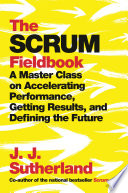

Scrum is introduced as a framework that promotes iterative progress through a series of sprints, allowing teams to adapt to changing requirements and improve product delivery. The book emphasizes how Scrum can help teams achieve higher quality outputs by fostering collaboration, transparency, and accountability. It outlines the roles within Scrum, such as the Scrum Master, Product Owner, and Development Team, highlighting their responsibilities and how they interact to create a productive environment. The iterative nature of Scrum allows teams to regularly assess their progress and adjust their strategies, which is crucial in today’s fast-paced business landscape.
Continue readingOne of the core principles of Scrum is its reliance on empirical process control, which is based on the idea that knowledge comes from experience and making decisions based on what is known. The book explains how Scrum leverages this principle through regular inspections and adaptations, ensuring that teams can respond effectively to changes and uncertainties. This idea is particularly relevant in environments where requirements are not fully known at the beginning of a project. The book provides practical examples of how teams can implement this principle to enhance their decision-making processes and improve outcomes.
Continue readingThe book delves into the characteristics of high-performing teams and how Scrum facilitates their development. It discusses the importance of trust, communication, and a shared vision among team members. The author emphasizes that Scrum is not just a set of practices but a way of thinking that encourages collaboration and collective ownership of tasks. By fostering an environment where team members feel safe to express their ideas and challenges, Scrum can help unlock the full potential of the team, leading to better performance and job satisfaction.
Continue readingWhile Scrum is often associated with small teams, the book addresses how to scale Scrum practices for larger organizations. It outlines various frameworks, such as Scrum of Scrums and LeSS (Large Scale Scrum), that can help coordinate multiple Scrum teams working on the same project. The author highlights the challenges that arise in scaling and provides strategies for overcoming them, such as maintaining clear communication channels and ensuring alignment on goals. This section is particularly valuable for leaders looking to implement Agile practices across their organizations.
Continue readingLeadership plays a crucial role in the successful implementation of Scrum. The book discusses how leaders can support Scrum teams by removing impediments, fostering a culture of continuous improvement, and encouraging innovation. The author emphasizes that leadership in a Scrum environment is more about serving the team than directing it, which aligns with the principles of servant leadership. This perspective is essential for creating an environment where teams can thrive and deliver high-quality products.
Continue readingA key component of Scrum is the practice of retrospectives, which allows teams to reflect on their processes and identify areas for improvement. The book provides guidance on how to conduct effective retrospectives that lead to actionable insights. It emphasizes the importance of creating a safe space for team members to share their thoughts and encourages a mindset of continuous improvement. This idea is fundamental for teams looking to enhance their efficiency and effectiveness over time.
Continue readingThe book is rich with real-world case studies that illustrate how different organizations have successfully implemented Scrum. These case studies provide practical insights and lessons learned that can be applied to various contexts. The author shares both successes and challenges faced by teams, offering readers a balanced view of Scrum's effectiveness. This practical approach helps demystify Scrum and provides a roadmap for teams looking to adopt Agile practices.
Continue reading